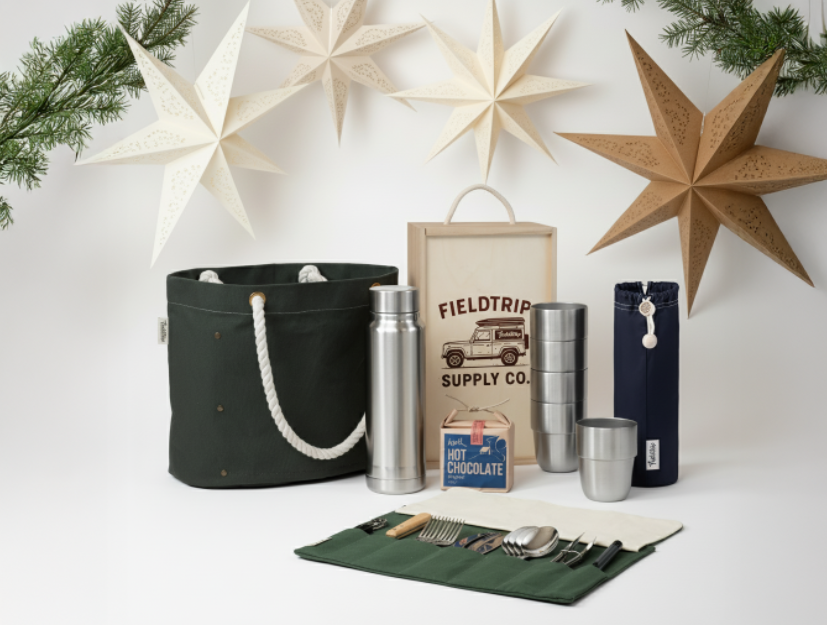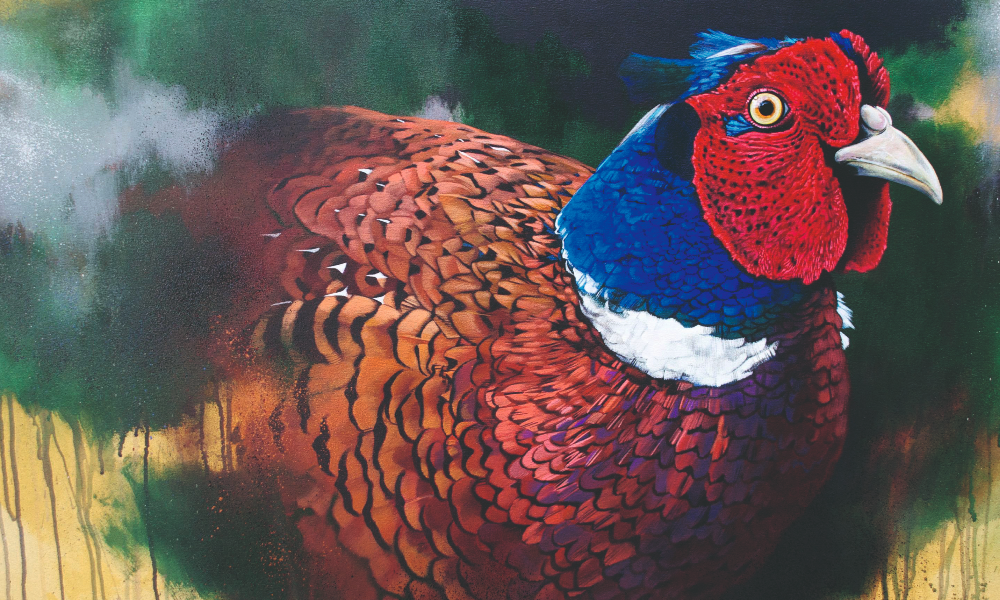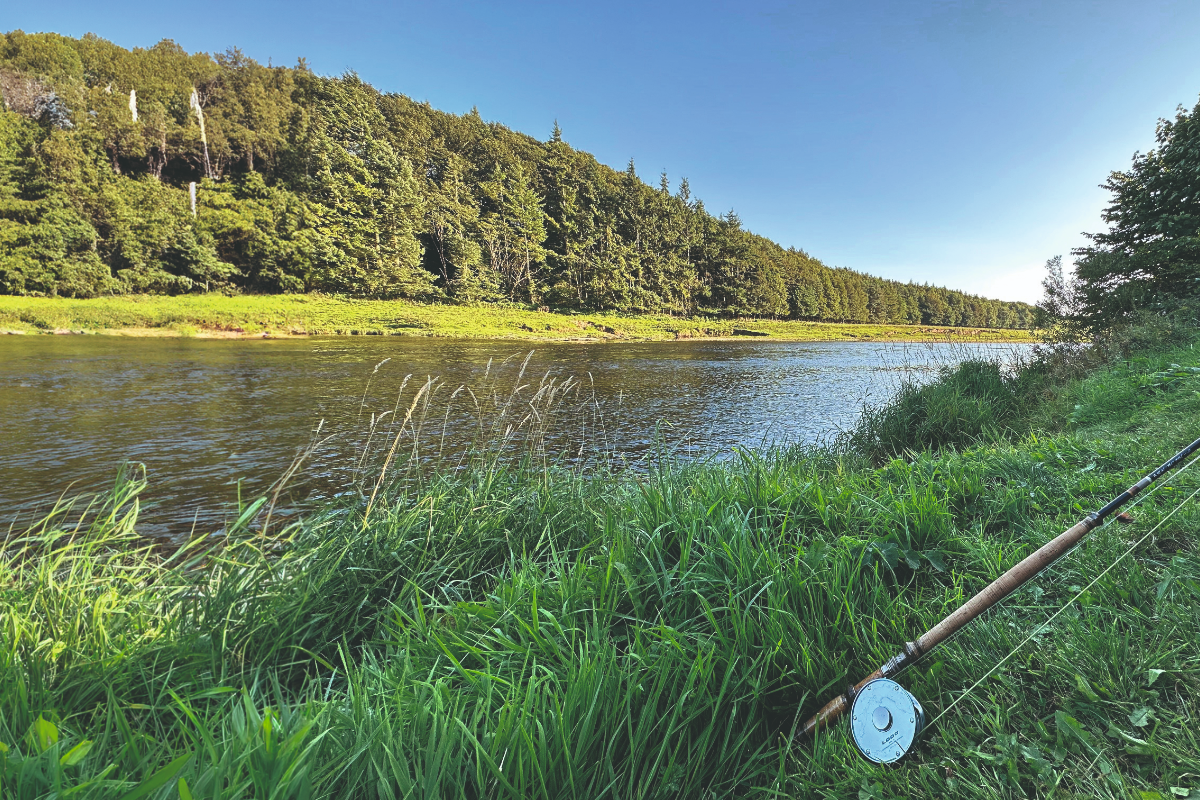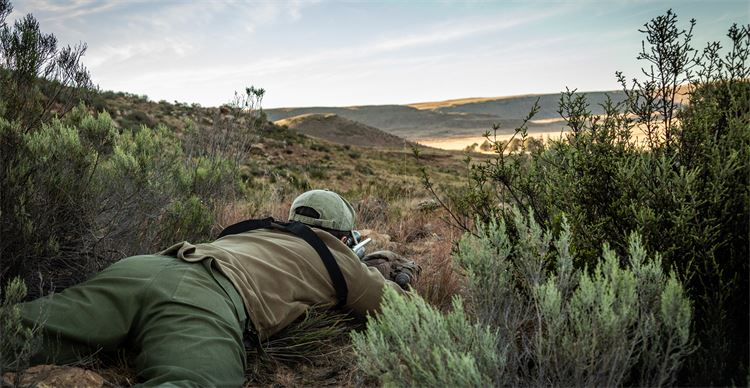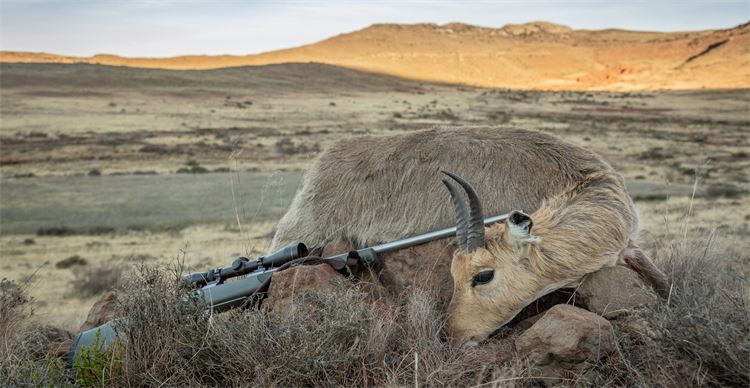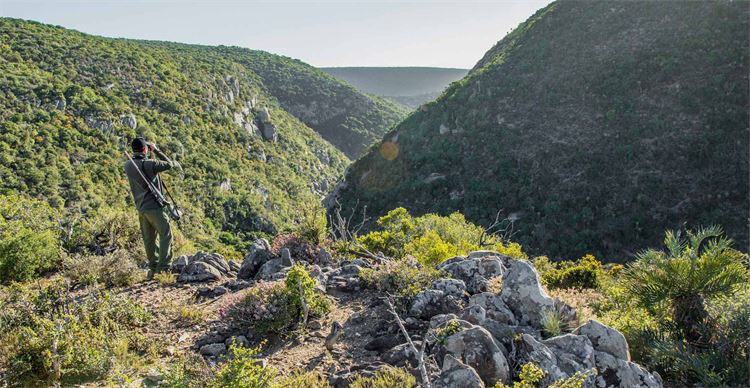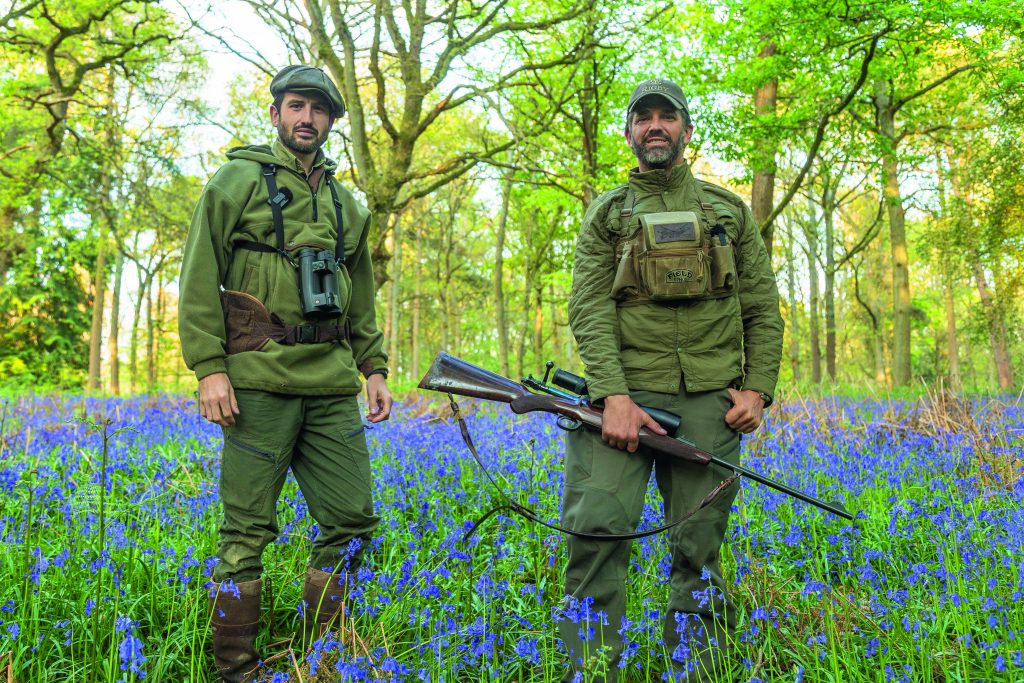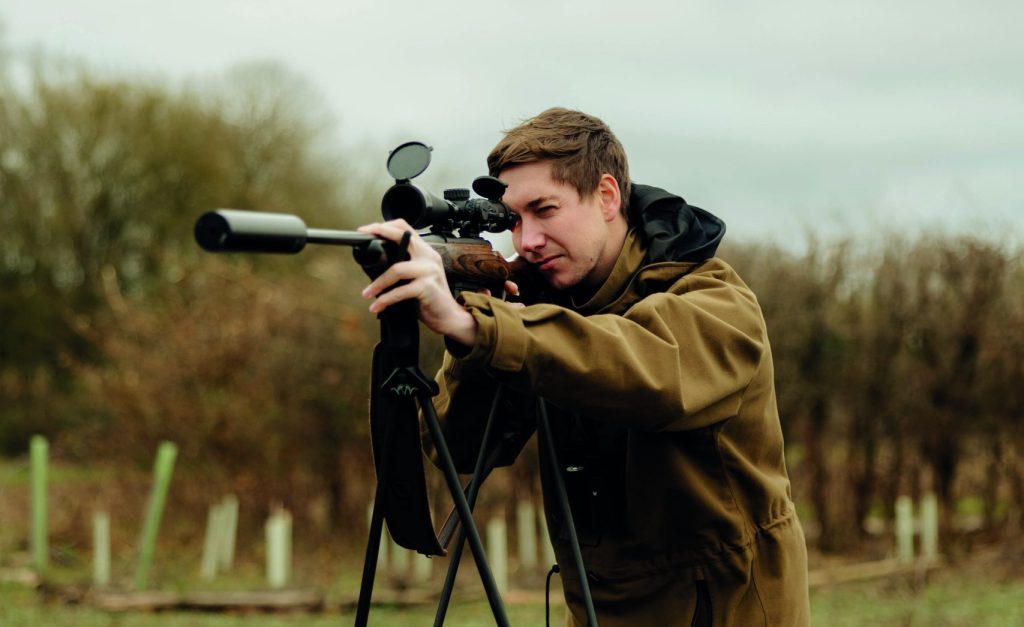Conservation through utilisation
Will Pocklington reminisces about a plains game safari never to be forgotten.
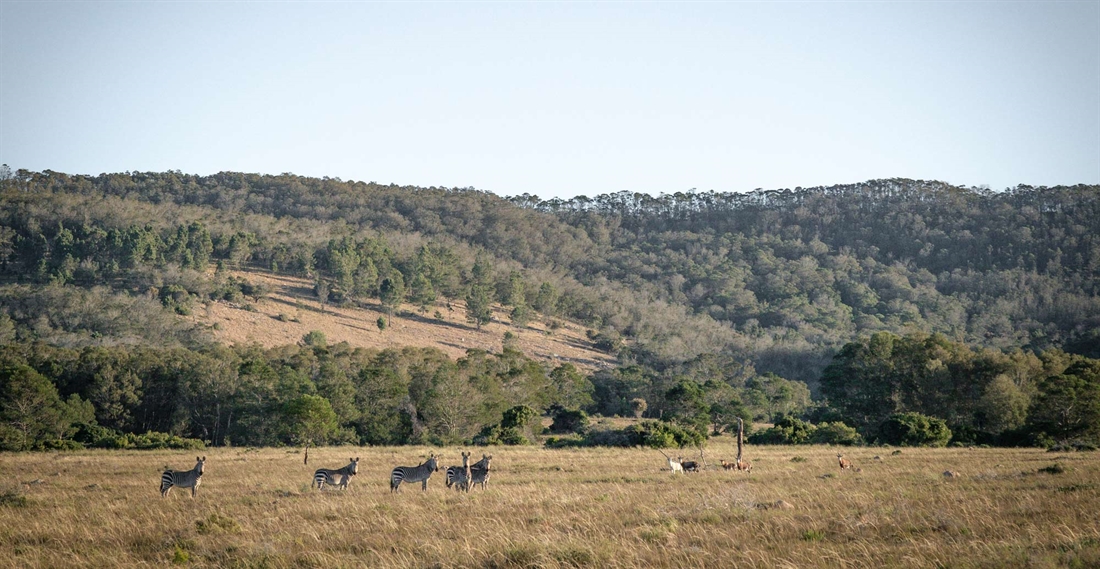
Do you see him? He’s moving to the left now, 15 yards uphill of the tallest acacia. There’s a cow with him. She’s just turned her head.” I caught the flick of her ears in the binoculars, and then a flash of his curled, polished horns, glinting in the winter sun. The bulk of his frame came slowly into view, moving to the rhythm of an unhurried gait. “A kudu bull in his prime,” James observed. It was the third we’d seen that afternoon, muscular and exuding vitality. “Come on, we’ll work our way further along the valley. He’s too good.”
It was June in South Africa’s Eastern Cape. My objective: to see flourishing populations of well-managed and healthy game animals in various habitats. The vehicle for doing so: hunting. Hunting the oldest, most gnarled specimens possible – those with sagging spines, angular faces, worn horn tips and many days behind them. I yearned for memories, and for the alluring cocktail of details proffered by the Dark Continent that I’d heard so much about.
I wasn’t there for medal-class wall decor; inches and symmetry of head furniture are oft-used yardsticks by safari goers, but they’re not really my bag. At the extreme end of the spectrum, I’ve heard stories of clients passing up the chance of stalking an animal because the guarantee of horns measuring exactly ‘X’-inches – their ‘number’ – could not be made by the PH at distance, despite being thereabouts. I’d be easily catered for.
Or so I thought… Sometimes flipping a concept on its head offers a clearer view of what one is looking at. Others might hastily brand this as nothing more than a ‘cull hunt’ and leave it at that – a disservice to the experience in my mind. The fact is, over the course of seven days I’d discover the characterful animals on my agenda were not as prolific as one might expect. The concept is simple and proven: where a healthy population of game is a valuable asset, there is great incentive to manage it and the associated environment properly. Numerous times, PH James (Quin) and I simply sat quietly and watched the fruits of such an approach go about their business – fit, strong animals with bright eyes, a sheen to their hides and every chance of passing on their superior genes for years to come. I found it fascinating; I think he found it refreshing.
Off the back of these encounters, the hunts we did commit to had more meaning. They felt good, like being a key part of the bigger picture. No, I wasn’t spending the big bucks and throwing lots of money into the local pot, but I was able to immerse myself in a style of hunting that improved the wildlife populations in a different manner, whilst aptly positioning myself to witness the living, breathing results of that first hand.
Along the way I’d stumble upon the things that brighten many a story of African adventure but make it difficult to write about without sounding clichéd: the landscapes, the harsh reality of nature, the unexpected encounters, the campfires, the night skies…
The first round in the unmoderated .270 was chambered in the Stormberg Mountains, our most northerly stop on a safari that would entail three concessions. Here, wide, open plains slope away from rugged mountainsides that stretch as high as 7,500ft above sea level; that this mountain range is home to South Africa’s only ski resort is indicative. It’s a landscape steeped in history, first inhabited by San Bushmen and later the scene of a number of battles in the Boer and Frontier Wars. A hundred thousand acres in size, this particular concession, managed by Stormberg Elangeni Safaris, is also rich with game and renowned for its greywing francolin and stable numbers of vaal rhebok.
Before I’d closed the bolt on the first cartridge of the safari, hunting in the Stormberg highlighted two things: Firstly, our quarry was as sound of senses as their younger, stronger counterparts. Perhaps they’d be the slowest in a race to escape, or the least agile in a dash from tooth and claw, but their primary assets – eyes, ears, nostrils – were unforgiving. And secondly, when there’s little cover to obscure an approach, using the lie of the land and knowing when to move quickly and when to move slowly, is key. A decisive approach pays dividends.
Diary entry: The Stormberg Conservancy
A black eagle soars idly on the thermals. A few hundred yards below, James and I cross a stream by a rocky outcrop. It has been five minutes or so since we saw the cluster of mountain reedbuck a way off in the distance, warming themselves in the late morning sun. We are out of sight now, and quickly making up ground in an effort to level ourselves with their last position. Time is of the essence.
Soon enough a walk turns into a crouching shuffle before we are crawling on elbows, shielding the binoculars strapped to our chests from the dusty earth and loose, sharp scree. We pull ourselves towards a break in a karoo bush. The wind is behind us but quartering to our left. There is still every chance…
Everything stops. In front, James reaches the crest of a rise and I watch him slowly raise his binoculars to the bridge of his nose. Carefully placing the rifle on the bag in the crook of two rocks beside him, he beckons me forward with his hand laid flat by his side. I slide into position but cannot see what he sees. I sense the calm urgency in his whisper, so shuffle a few yards further on my stomach. “It’s the nearest animal, he’s broadside now,” he instructs as I pass him.
The ram is stood proudly but staring at our position. Broadside atop a rock, a little over 200 yards away, his harem around him. He knows. I’m low to the ground but get comfortable behind the trigger and squeeze… He runs but concludes a 100-yard sprint by circling and dropping to the ground in a tangle of kicking legs. James’ young dog, Cane, gains a little more tracking experience as he follows the blood trail from the shot site to where the animal lies, still now.
A broken horn on one side, his ragged flaps of ears are incomplete, a potential result of frostbite. A very mature ram with atleast nine years behind him. “This old boy would struggle in a hard winter,” James explains. Back at Buffelsfontein lodge he’d make good eating.
Travel south through the Winterberg mountains was ear-popping. Montane grassland and dramatic hills gradually gave way to a more temperate, wooded terrain. We passed a number of citrus plantations, their neat rows of trees in stark contrast to the untamed bushveld which stretched in almost every direction otherwise.
The earth track which leaves the slightly more robust tarmac road from Fort Beaufort extends for six miles before the thatched roofs of Nxakwe Lodge become visible. This entirely free-range area spans 125,000 acres beside the Kat River, a tributary of the Great Fish River that drains the southern slopes of the Winterberg Mountains. Here’s a conservancy in a ranching area with real conservation credentials: It has the highest concentration of kudu in the world. Through sound management of the area, a small population in the early 1900s has grown to the extent that 70 trophies and 400 management kudu are taken from the Kat River Conservancy each year. Bushbuck, nyala and mountain reedbuck numbers have grown exponentially, too.
We were off-grid. The flicker of paraffin lamps illuminated wooden walkways between the rustic sleeping quarters. Crickets and the crackle of the campfire broke the silence between jovial conversation. Trays of hot coals rested under canvas seats to warm haunches. Overhead the inky sky was free from light pollution. But there were stars. Thousands of them.
At dawn there was frost on the ground. And before long we were rumbling towards a spot where we would park the Land Cruiser and set out on foot. Our tracker, Sharpie, stood in the back, keen-eyed, tapping on the roof when he saw game of interest. He used the orange tops of Aloe ferox as markers to explain their position. The taps were frequent. I was amazed by his eyesight. We saw Burchell’s zebra, blue wildebeest, warthogs, bontebok, impala, springbok, gemsbok, sable, vervet monkeys, eland, kudu, nyala…
The odd small group of Angora goats and merino sheep served as a reminder of what the main inhabitants of this area would be were it not for the economic incentive provided by hunting. The taps on the roof would be far fewer; a tracker would have no job; wild game would have no value, nor protection – it would perish.
Diary entry: The Kat River Conservancy
We walk and glass and walk and glass, spying for the shine of keratin, or movement amongst the thick tangles of acacia, wild olive and shepherd’s trees. Then he appears across the valley as if out of thin air. A suitable kudu bull, browsing in the warming rays of the sun.
The wind and the sun – we’d need them as our allies. Cutting out and round, with Sharpie and Cane following, we steadily work towards a position where our shortening shadows stretch towards where the bull was last seen. A breeze blows across us.
Sooner than expected, James stiffens mid step, stares for a short while and then leads me, quickly this time, a short way downhill where he sets up the sticks without delay. “Wait for him to take a step. Put it there.” He prods me in the ribs. The bull is quartering slightly away from us. A slab of his striped flank is visible through a break in the thorny scrub. His spiralled horns protrude above the greenery like pissed off vipers.
He takes a step and the shot echoes with a resounding thwack. Then he disappears. James is swift and decisive. We make for more open ground and catch sight of the bull trotting further into a rocky ravine, unsteady but approaching an area that will make extraction a challenge. Then he stops momentarily, and I am on the sticks ready for him. This time he lurches, stumbles and drops.
Lung-strewn blood trails down to his position; that first shot had found its mark. These animals are tough. An aardwolf, caught up in the commotion, makes a dash for cover as we approach where the bull lies. Six-hundred-pounds in weight, it is a small example of a much-revered plains game quarry. The smallest James has ever taken with a client. I take a while admiring him before we are joined by four helpers from base. Between seven of us, we drag the gralloched beast up and into a truck. Deftly butchered back at camp, his meat will be enjoyed for weeks to come.
By the time we departed the Kat River Conservancy, similar stories had played out with an old impala ram – tips worn, tick-covered, belly stained – and a battle-scarred warthog. Our final destination, though, would offer a very different experience. Here the rifle stayed in its slip.
The Fort Governors Estate near Grahamstown is a 25,000-acre reserve of pristine natural veld – think lush yellow-wood forests, rolling grassy plains and dense hillside thickets. Unlike the Stormberg and Kat River concessions, Fort Governors has a high fence around its perimeter. I was sceptical at first, but then I met Reserve Manager Sean van Zyl and over the course of two days had the opportunity to learn about the great strides he and his team are making in their quest to improve the biodiversity in the area. It’s practically a haven for wildlife.
So close to civilisation and hungry mouths, without the fences in this part of the world the game would vanish – and the habitat and myriad other species with it. Game within fenced concessions is privately owned and therefore privately managed as an asset. If all of the mature animals in such an area are shot in a short timeframe, the reserve will have none to market to hunters in the years that follow, and income diminishes, so there’s great incentive to manage populations in a considered and ethical manner.
The money from hunting tourism is reinvested back into the improvement of such areas, and to the benefit of a great many species. Fort Governers is a commendable example of this.
Money has been spent on a series of trail cameras which are set up to help gauge populations, determine male:female ratios, identify areas favoured by predators, and monitor the reserve for unwanted visitors.
Utilising modern technology also frees up manual labour for habitat management work. The rotational burning of bog grass, and the consequent encouragement of spekboom (Portulacaria afra) – a highly nutritional plant favoured by browsers – is one example.
An ongoing, long-term project which the reserve has invested in heavily is the management of black wattle (Acacia nearnsii), an invasive evergreen tree species of Australian origin which competes with and replaces indigenous grassland and riverine species. A very thirsty species which consumes a lot of water, further spread can be discouraged by creating dams and drying out areas where the wattle grows. Thereafter, existing growth can be felled in blocks, bit by bit.
Much thought is given to the animals themselves, too. As a species that breeds year-round, strong herds of blesbok are nurtured to help relieve predation pressure on other species. Jackal numbers are also controlled. Ostrich numbers are on the rise as a result of this continued effort, as are blue duiker, Cape grysbuck and bushbuck to name a few.
Perhaps the most impressive conservation story at Fort Governors is that of the Cape mountain zebra – a species that was on the brink of extinction in the mid 1930s, with fewer than 50 animals thought to be in existence. The species now number over 10,000 and they can be legally hunted. Predator control, careful monitoring, and considered management of age classes have all played their part.
I left feeling fulfilled. Objectives achieved. A first-hand insight into the way things are in South Africa. And, crucially, a better understanding of why.
Now those horns – small and worn and some of them skewed – hang proudly on the wall at home beside corkscrew roebucks, a one-antlered red stag, muntjac heads with strange quirks… Bags of character. Each and every time I look at them, I think of the excitement of the final minutes of the stalk, the instinct and knowledge of the tracker and PH, of the glow of the fire against the starlit skies of an evening… But most of all I think of how vital this kind of hunting is to the future of so many species. This is conservation through utilisation.
Related Articles
Get the latest news delivered direct to your door
Subscribe to Fieldsports Journal
Elevate your experience in the field with a subscription to Fieldsports Journal, the premium publication for passionate country sports enthusiasts. This bi-monthly journal delivers unparalleled coverage of game shooting, fishing and big game across the UK and beyond.
Each issue offers a stunning collection of in-depth features, expert opinions and world-class photography, all presented in a timeless yet contemporary design.
Save 10% on shop price when you subscribe, with a choice of packages that work for you. Choose from Print & Digital or Digital only with each journal delivered directly to your door or via the app every other month, plus access to past issues with the digital back issue library.



